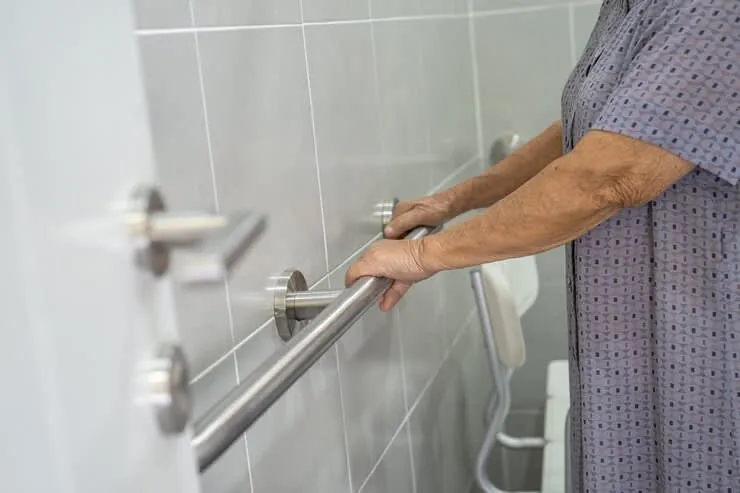Aging doesn’t have to mean giving up independence or comfort. Even small changes around the house can make a big difference in how easy and safe it is to live at home after 65. Whether you’re looking to prevent falls, simplify daily tasks, or make your home more comfortable, there are practical solutions that don’t have to require major renovations or expensive equipment. These simple home hacks are designed to help older adults live more confidently and comfortably at home.

Contents
Simple Technology
While some seniors avoid technology, certain devices can help make life much simpler. For example, voice-activated assistants like Alexa or Google Home can be used to set reminders, play music, check the weather, or make phone calls without pressing buttons or searching through menus.
Additionally, smart plugs can be used to turn lamps or appliances on and off remotely or on a timer. Video doorbells let you see who’s at the door without having to get up or open it. The key is to choose intuitive tools that don’t require constant troubleshooting. For more tips on navigating retirement with ease, visit https://boomerbenefits.com/8-tips-for-retirement-in-2025.
Better Lighting
Good lighting is one of the most overlooked safety features in the home. As we age, our eyes need more light to see clearly. Shadows, dark corners, and dim hallways can increase the risk of trips and falls. Adding brighter light bulbs in important areas, such as stairways, bathrooms, and hallways, can be an easy way to improve visibility.
Placing night lights throughout the home, like bedrooms and bathrooms, can also help when getting up during the night. For seniors who prefer not to worry about light switches, motion-sensor lights can be a good alternative to turn on when movement is detected automatically.
Convenient Storage
Kitchens and closets often become difficult to manage with age. One simple way to make life easier is by reorganizing storage so regularly used items are within easy reach. For example, you can place frequently used cookware, utensils, and pantry items on waist-level shelves. Also consider using pull-out shelves, lazy Susans, and drawer organizers to lower the need for bending, reaching, or digging through clutter. In closets, hanging organizers and lower rods can bring clothing within reach without the need for step stools or straining.
Bathroom Safety
Bathrooms are one of the most common places for slips and falls. Fortunately, there are more affordable changes that can lower that risk. Installing a grab bar near the toilet and in the shower or bathtub offers extra support when standing or sitting. A non-slip mat or adhesive strips on the shower floor help improve traction, while a raised toilet seat or a shower chair can make personal care more manageable without assistance.
Easy-to-Use Kitchen Appliances
Every day cooking doesn’t need to be complicated. Replacing old or bulky appliances with simpler, senior-friendly ones can make a big difference. Look for things like microwaves with large buttons or toasters and electric kettles with automatic shut-off features. Induction cooktops can also be a safer alternative to traditional stovetops since they don’t get hot unless there’s a pan in place. For those who struggle with heavy pots and pans, switching to lightweight cookware can help reduce strain on hands and wrists.
Utilizing Labels
Whether it’s medication bottles, light switches, or pantry containers, clear labeling can reduce confusion and mistakes. Large print labels or color-coded stickers can make it easier to identify items, which can be especially helpful for those with vision or memory challenges.
Labeling light switches or remote controls can also help reduce confusion, and pre-printed medication organizers with clear day and time markings can help ensure the right pills are taken at the right time.
Rest Areas
As we age, it’s helpful to have spaces throughout the home where we can sit, rest, or take a break. A chair in the hallway, kitchen, or near the entrance can provide a quick resting spot when needed. These mini rest zones can also double as places to put on shoes, check the mail, or wait for transportation. Making sure each sitting area has good lighting and a small table or shelf nearby can also add convenience and comfort.
Small Changes
You don’t need to transform your whole house overnight. The smallest changes, like a night light in the bathroom, a labeled container on the counter, or a chair in the hallway, can often be the most useful.
These simple hacks can reduce frustration, prevent accidents, and increase your comfort every day. Whether you’re aging in place by choice or circumstance, your home should work with you, not against you. Taking a little time to adjust your surroundings can go a long way toward making life after 65 easier and more enjoyable.

